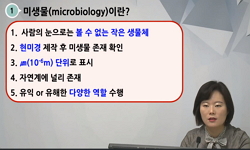Purpose: While single-species biofilms have been studied extensively, we know notably littleregarding multispecies biofilms and their interactions. The purpose of this study was todevelop and evaluate an in vitro multispecies dental biofilm model that...
http://chineseinput.net/에서 pinyin(병음)방식으로 중국어를 변환할 수 있습니다.
변환된 중국어를 복사하여 사용하시면 됩니다.
- 中文 을 입력하시려면 zhongwen을 입력하시고 space를누르시면됩니다.
- 北京 을 입력하시려면 beijing을 입력하시고 space를 누르시면 됩니다.
https://www.riss.kr/link?id=A103918722
- 저자
- 발행기관
- 학술지명
- 권호사항
-
발행연도
2014
-
작성언어
English
- 주제어
-
등재정보
KCI등재,SCIE,SCOPUS
-
자료형태
학술저널
- 발행기관 URL
-
수록면
79-84(6쪽)
-
KCI 피인용횟수
16
- 제공처
-
0
상세조회 -
0
다운로드
부가정보
다국어 초록 (Multilingual Abstract)
Methods: Streptococcus gordonii KN1, Fusobacterium nucleatum ATCC23726, Aggregatibacteractinomycetemcomitans ATCC33384, and Porphyromonas gingivalis ATCC33277were used for this experiment. The biofilms were grown on 12-well plates with a roundglass slip (12 mm in diameter) with a supply of fresh medium. Four different single-speciesbiofilms and multispecies biofilms with the four bacterial strains listed above were prepared.
The biofilms were examined with a confocal laser scanning microscope (CLSM) andscanning electron microscopy (SEM). The minimum inhibitory concentrations (MIC) for fourdifferent planktonic single-species and multispecies bacteria were determined. The MICs ofdoxycycline and chlorhexidine for four different single-species biofilms and a multispeciesbiofilm were also determined.
Results: The CLSM and SEM examination revealed that the growth pattern of the multispeciesbiofilm was similar to those of single-species biofilms. However, the multispeciesbiofilm became thicker than the single-species biofilms, and networks between bacteriawere formed. The MICs of doxycycline and chlorhexidine were higher in the biofilm statethan in the planktonic bacteria. The MIC of doxycycline for the multispecies biofilm washigher than were those for the single-species biofilms of P. gingivalis, F. nucleatum, or A.
actinomycetemcomitans. The MIC of chlorhexidine for the multispecies biofilm was higherthan were those for the single-species biofilms of P. gingivalis or F. nucleatum.
Conclusions: To mimic the natural dental biofilm, a multispecies biofilm composed of fourbacterial species was grown. The 24-hour multispecies biofilm may be useful as a laboratorydental biofilm model system.
Purpose: While single-species biofilms have been studied extensively, we know notably littleregarding multispecies biofilms and their interactions. The purpose of this study was todevelop and evaluate an in vitro multispecies dental biofilm model that aimed to mimicthe environment of chronic periodontitis.
Methods: Streptococcus gordonii KN1, Fusobacterium nucleatum ATCC23726, Aggregatibacteractinomycetemcomitans ATCC33384, and Porphyromonas gingivalis ATCC33277were used for this experiment. The biofilms were grown on 12-well plates with a roundglass slip (12 mm in diameter) with a supply of fresh medium. Four different single-speciesbiofilms and multispecies biofilms with the four bacterial strains listed above were prepared.
The biofilms were examined with a confocal laser scanning microscope (CLSM) andscanning electron microscopy (SEM). The minimum inhibitory concentrations (MIC) for fourdifferent planktonic single-species and multispecies bacteria were determined. The MICs ofdoxycycline and chlorhexidine for four different single-species biofilms and a multispeciesbiofilm were also determined.
Results: The CLSM and SEM examination revealed that the growth pattern of the multispeciesbiofilm was similar to those of single-species biofilms. However, the multispeciesbiofilm became thicker than the single-species biofilms, and networks between bacteriawere formed. The MICs of doxycycline and chlorhexidine were higher in the biofilm statethan in the planktonic bacteria. The MIC of doxycycline for the multispecies biofilm washigher than were those for the single-species biofilms of P. gingivalis, F. nucleatum, or A.
actinomycetemcomitans. The MIC of chlorhexidine for the multispecies biofilm was higherthan were those for the single-species biofilms of P. gingivalis or F. nucleatum.
Conclusions: To mimic the natural dental biofilm, a multispecies biofilm composed of fourbacterial species was grown. The 24-hour multispecies biofilm may be useful as a laboratorydental biofilm model system.
참고문헌 (Reference)
1 Schlafer S, "pH landscapes in a novel five-species model of early dental biofilm" 6 : e25299-, 2011
2 Wilson M, "Susceptibility of oral bacterial biofilms to antimicrobial agents" 44 : 79-87, 1996
3 Fux CA, "Survival strategies of infectious biofilms" 13 : 34-40, 2005
4 Sanchez MC, "Structure, viability and bacterial kinetics of an in vitro biofilm model using six bacteria from the subgingival microbiota" 46 : 252-260, 2011
5 Holt SC, "Porphyromonas gingivalis, Treponema denticola, and Tannerella forsythia: the "red complex", a prototype polybacterial pathogenic consortium in periodontitis" 38 : 72-122, 2005
6 송현화, "Phototoxic effect of blue light on the planktonic and biofilm state of anaerobic periodontal pathogens" 대한치주과학회 43 (43): 72-78, 2013
7 Kolenbrander PE, "Oral multispecies biofilm development and the key role of cell-cell distance" 8 : 471-480, 2010
8 Periasamy S, "Mutualistic biofilm communities develop with Porphyromonas gingivalis and initial, early, and late colonizers of enamel" 191 : 6804-6811, 2009
9 Wright TL, "Effects of metronidazole on Porphyromonas gingivalis biofilms" 32 : 473-477, 1997
10 James GA, "Digital image analysis of growth and starvation responses of a surface-colonizing Acinetobacter sp" 177 : 907-915, 1995
1 Schlafer S, "pH landscapes in a novel five-species model of early dental biofilm" 6 : e25299-, 2011
2 Wilson M, "Susceptibility of oral bacterial biofilms to antimicrobial agents" 44 : 79-87, 1996
3 Fux CA, "Survival strategies of infectious biofilms" 13 : 34-40, 2005
4 Sanchez MC, "Structure, viability and bacterial kinetics of an in vitro biofilm model using six bacteria from the subgingival microbiota" 46 : 252-260, 2011
5 Holt SC, "Porphyromonas gingivalis, Treponema denticola, and Tannerella forsythia: the "red complex", a prototype polybacterial pathogenic consortium in periodontitis" 38 : 72-122, 2005
6 송현화, "Phototoxic effect of blue light on the planktonic and biofilm state of anaerobic periodontal pathogens" 대한치주과학회 43 (43): 72-78, 2013
7 Kolenbrander PE, "Oral multispecies biofilm development and the key role of cell-cell distance" 8 : 471-480, 2010
8 Periasamy S, "Mutualistic biofilm communities develop with Porphyromonas gingivalis and initial, early, and late colonizers of enamel" 191 : 6804-6811, 2009
9 Wright TL, "Effects of metronidazole on Porphyromonas gingivalis biofilms" 32 : 473-477, 1997
10 James GA, "Digital image analysis of growth and starvation responses of a surface-colonizing Acinetobacter sp" 177 : 907-915, 1995
11 Socransky SS, "Dental biofilms: difficult therapeutic targets" 28 : 12-55, 2002
12 Ximenez-Fyvie LA, "Comparison of the microbiota of supra- and subgingival plaque in health and periodontitis" 27 : 648-657, 2000
13 Kolenbrander PE, "Communication among oral bacteria" 66 : 486-505, 2002
14 Prates RA, "Bactericidal effect of malachite green and red laser on Actinobacillus actinomycetemcomitans" 86 : 70-76, 2007
15 Kolenbrander PE, "Bacterial interactions and successions during plaque development" 42 : 47-79, 2006
16 Sissons CH, "Artificial dental plaque biofilm model systems" 11 : 110-126, 1997
17 Prescott JF, "Antimicrobial susceptibility testing and antimicrobial drug dosage" 187 : 363-368, 1985
18 Sader HS, "Antimicrobial activity of daptomycin tested against Gram-positive pathogens collected in Europe, Latin America, and selected countries in the Asia-Pacific Region (2011)" 75 : 417-422, 2011
19 Walker C, "An in vitro biofilm model of subgingival plaque" 22 : 152-161, 2007
동일학술지(권/호) 다른 논문
-
- Korean Academy of Periodontology
- Yang, Seung-Min
- 2014
- KCI등재,SCIE,SCOPUS
-
- Korean Academy of Periodontology
- Deore, Girish D.
- 2014
- KCI등재,SCIE,SCOPUS
-
- Korean Academy of Periodontology
- Chakraborty, Souvik
- 2014
- KCI등재,SCIE,SCOPUS
-
Effect of supportive periodontal therapy on the prevention of tooth loss in Korean adults
- Korean Academy of Periodontology
- Kim, Sang-Yul
- 2014
- KCI등재,SCIE,SCOPUS
분석정보
인용정보 인용지수 설명보기
학술지 이력
| 연월일 | 이력구분 | 이력상세 | 등재구분 |
|---|---|---|---|
| 2023 | 평가예정 | 해외DB학술지평가 신청대상 (해외등재 학술지 평가) | |
| 2020-01-01 | 평가 | 등재학술지 유지 (해외등재 학술지 평가) |  |
| 2012-03-21 | 학술지명변경 | 한글명 : The Journal of the Korean Academy of Periodontology (JPIS) -> Journal of Periodontal & Implant Science 외국어명 : THE JOURNAL OF KOREAN ACADEMY OF PERIODONTOLOGY -> Journal of Periodontal & Implant Science |  |
| 2011-03-22 | 학술지명변경 | 한글명 : 대한치주과학회지 -> The Journal of the Korean Academy of Periodontology (JPIS) |  |
| 2010-01-01 | 평가 | 등재학술지 유지 (등재유지) |  |
| 2008-01-01 | 평가 | 등재학술지 유지 (등재유지) |  |
| 2005-01-01 | 평가 | 등재학술지 선정 (등재후보2차) |  |
| 2004-01-01 | 평가 | 등재후보 1차 PASS (등재후보1차) |  |
| 2002-07-01 | 평가 | 등재후보학술지 선정 (신규평가) |  |
학술지 인용정보
| 기준연도 | WOS-KCI 통합IF(2년) | KCIF(2년) | KCIF(3년) |
|---|---|---|---|
| 2016 | 0.91 | 0.14 | 0.66 |
| KCIF(4년) | KCIF(5년) | 중심성지수(3년) | 즉시성지수 |
| 0.56 | 0.45 | 0.49 | 0.02 |






 KCI
KCI






